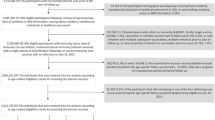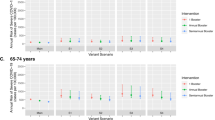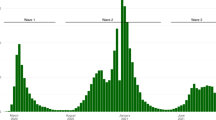Abstract
The risk of reinfection has been difficult to quantify throughout the pandemic, making the case for COVID-19 vaccination and receipt of booster doses to the public difficult for the public health community. To address this question, Michigan statewide COVID-19 infection and vaccination data was utilized in this cross-sectional study to determine the risk of reinfection by vaccination status. Cases were divided into subgroups by vaccination status, and the risk of reinfection in the various vaccination categories was then calculated by dividing the cumulative incidence of reinfection in a vaccine category by the cumulative incidence of reinfection of those not in that category Within this population, the risk of becoming reinfected was 1.6 times higher for those who were unvaccinated than those who were vaccinated; those with a primary series saw a 27% reduced risk of reinfections compared to those without a primary series. Those with an additional booster dose had a modest improvement, with 35% reduced risk of reinfection when compared to the other groups combined. These results provide population level data to support current public health vaccination recommendations.
Similar content being viewed by others
References
Arslan, Y., Akgul, F., Sevim, B., Varol, Z. S., & Tekin, S. (2022). Reinfection in COVID-19: Do we exaggerate our worries? European Journal of Clinical Investigation, 52(6), https://doi.org/10.1111/eci.13767.
Bowe, B., Xie, Y., & Al-Aly, Z. (2022). Acute and postacute sequelae associated with SARS-CoV-2 reinfection. Nature Medicine, 28, 2398–2405. https://doi.org/10.1038/s41591-022-02051-3.
Silk, B. J., Scobie, H. M., Duck, W. M., et al. (2023). COVID-19 Surveillance after Expiration of the Public Health Emergency Declaration ― United States, May 11, 2023. Mmwr. Morbidity and Mortality Weekly Report, 72, 523–528. https://doi.org/10.15585/mmwr.mm7219e1.
Nielsen, K. F., Moustsen-Helms, I. R., Schelde, A. B., Gram, M. A., Emborg, H. D., Nielsen, J. Vaccine effectiveness against SARS-CoV-2 reinfection during periods of alpha, Delta, or Omicron dominance: A Danish nationwide study. 2022 PLoS Med 19(11): e1004037. https://doi.org/10.1371/journal.pmed.1004037.
Cavanaugh, A. M., Spicer, K. B., Thoroughman, D., Glick, C., & Winter, K. (2021). Reduced risk of Reinfection with SARS-CoV-2 after COVID-19 vaccination — Kentucky, May–June 2021. Mmwr. Morbidity and Mortality Weekly Report, 70, 1081–1083. https://doi.org/10.15585/mmwr.mm7032e1.
Interim clinical Considerations for Use of COVID-19 Vaccines in the United States (2023, June 14). CDC. https://www.cdc.gov/vaccines/covid-19/clinical-considerations/interim-considerations-us.html#:~:text=COVID%2D19%20vaccination%20is%20recommended,date%20with%20COVID%2D19%20vaccination.
Thompson, M. G., Natarajan, K., Irving, S. A., et al. (2022). Effectiveness of a third dose of mRNA vaccines against COVID-19–Associated Emergency Department and Urgent Care encounters and hospitalizations among adults during periods of Delta and Omicron variant predominance — VISION network, 10 States, August 2021–January 2022. Mmwr. Morbidity and Mortality Weekly Report, 71, 139–145. https://doi.org/10.15585/mmwr.mm7104e3.
Surie, D., DeCuir, J., Zhu, Y., et al. (2022). Early estimates of Bivalent mRNA vaccine effectiveness in preventing COVID-19–Associated hospitalization among immunocompetent adults aged ≥ 65 years — IVY Network, 18 States, September 8–November 30, 2022. Mmwr. Morbidity and Mortality Weekly Report, 71, 1625–1630. https://doi.org/10.15585/mmwr.mm715152e2.
Funding
The work was supported by the Centers for Disease Control and Prevention, grant number NU50CK000510-01-14.
Author information
Authors and Affiliations
Corresponding author
Ethics declarations
Competing interests
The authors have no competing interests to declare that are relevant to the content of this article.
Additional information
Publisher’s Note
Springer Nature remains neutral with regard to jurisdictional claims in published maps and institutional affiliations.
Electronic Supplementary Material
Below is the link to the electronic supplementary material.
Rights and permissions
Springer Nature or its licensor (e.g. a society or other partner) holds exclusive rights to this article under a publishing agreement with the author(s) or other rightsholder(s); author self-archiving of the accepted manuscript version of this article is solely governed by the terms of such publishing agreement and applicable law.
About this article
Cite this article
Omoike, E., Miceli, A., Busen, K. et al. Relative Risk of COVID-19 Reinfection by Demographic and Vaccination Factors During the Period March 2020-October 2022. J Community Health 49, 339–342 (2024). https://doi.org/10.1007/s10900-023-01303-8
Accepted:
Published:
Issue Date:
DOI: https://doi.org/10.1007/s10900-023-01303-8




